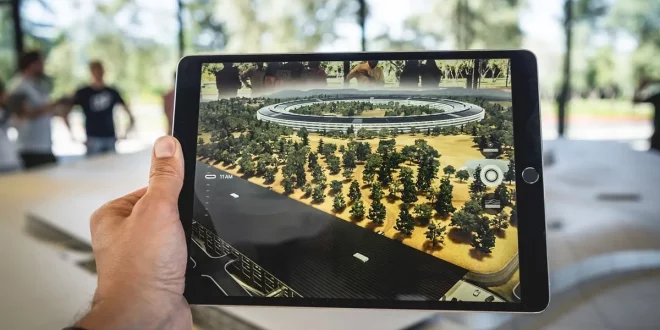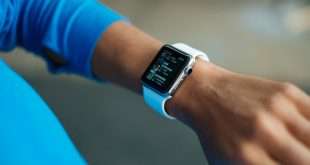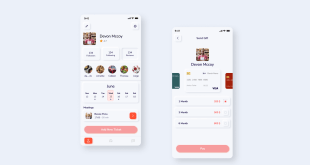In today’s fast-paced digital landscape, web design has evolved dramatically. One of the most exciting advancements that has captivated designers and users alike is the rise of Augmented Reality (AR) in web design. This revolutionary technology has opened new possibilities to enhance user experience, going beyond traditional screens and offering a more interactive and immersive online journey.
Understanding Augmented Reality (AR)
Augmented Reality is a technology that superimposes computer-generated elements, such as images, videos, or 3D models, onto the user’s real-world environment. Unlike Virtual Reality (VR), which completely replaces the real world, AR integrates digital elements seamlessly, enriching the user’s perception of reality. With the increasing power of mobile devices, AR has found its way into various applications, including web design.
Augmented Reality and User Engagement
User engagement is a critical factor in the success of any website. AR brings a new dimension of interactivity, encouraging users to explore and spend more time on the site. By providing captivating AR experiences, websites can keep visitors engaged, leading to lower bounce rates and higher conversions.
AR also offers an opportunity for businesses to showcase their products or services in an interactive way. For instance, an e-commerce website can allow customers to virtually try on clothes or visualize furniture in their living spaces, creating a personalized and immersive shopping experience.
Boosting Conversion Rates with AR
Augmented Reality has the potential to significantly impact conversion rates. By providing an innovative and engaging browsing experience, AR can influence user behavior positively. When customers feel more connected to a product or service, they are more likely to make a purchase. This is particularly relevant in industries such as fashion, interior design, and automotive, where visualizing products is crucial.
AR in Storytelling and Branding
Brands are always looking for unique ways to tell their story and leave a lasting impression on their audience. AR can be a powerful tool in this regard. Websites can use AR to create interactive narratives, immersing visitors in the brand’s world. This storytelling approach allows businesses to showcase their values, missions, and products in an engaging and memorable manner.
Augmented Reality for Enhanced Information Sharing
AR can be leveraged to provide users with detailed information in a more engaging manner. For instance, educational websites can use AR to present complex concepts visually, making learning more enjoyable and effective. Additionally, AR can enhance travel websites, allowing users to virtually explore destinations and landmarks before planning their trips.
AR and Personalization
Personalization is at the core of modern web design. AR takes personalization to the next level by offering tailor-made experiences to each user. By analyzing user preferences and behavior, websites can deliver AR content that matches individual interests and needs. This personal touch not only enhances user experience but also strengthens brand loyalty.
Challenges and Considerations in AR Implementation
While Augmented Reality holds immense potential, its implementation requires careful consideration. Some challenges include:
Technical complexity: AR implementation may demand specialized skills and technologies, which can be costly and time-consuming.
User accessibility: Websites must ensure that AR experiences are accessible to all users, including those with disabilities.
App integration: For mobile AR experiences, users may need to download specific apps, adding an extra step in the user journey.
The Future of AR in Web Design
The future of AR in web design looks promising. As technology continues to advance, we can expect more streamlined AR development processes, making it easier for businesses to incorporate AR elements into their websites. Furthermore, with the advent of wearable AR devices, the integration of AR into web design is set to become even more seamless and widespread.
Final Words
In conclusion, the rise of Augmented Reality in web design marks a paradigm shift in user experience. By offering interactive and immersive content, AR enhances user engagement, boosts conversion rates, and provides unique branding opportunities. As technology continues to progress, AR’s potential in web design is limitless, making it an exciting time for businesses and users alike.
Commonly Asked Questions
Q1. How does Augmented Reality work in web design?
Augmented Reality in web design utilizes computer-generated elements that overlay the user’s real-world environment, providing an interactive and immersive experience.
Q2. Can AR be used for e-commerce websites?
Yes, AR can be a game-changer for e-commerce websites. It enables customers to virtually try on products or visualize them in their surroundings, leading to increased engagement and higher conversion rates.
Q3. Is AR accessible to all users?
Web designers must ensure that AR experiences are accessible to all users, including those with disabilities. Implementing AR responsibly and inclusively is essential.
Q4. What industries can benefit from AR in web design?
AR can benefit various industries, including fashion, interior design, automotive, education, and travel. It allows businesses to showcase products, deliver interactive learning experiences, and provide virtual travel previews.
Q5. What challenges does AR implementation pose?
AR implementation may present challenges related to technical complexity, user accessibility, and app integration. Overcoming these challenges requires careful planning and execution.
 webfily
webfily



